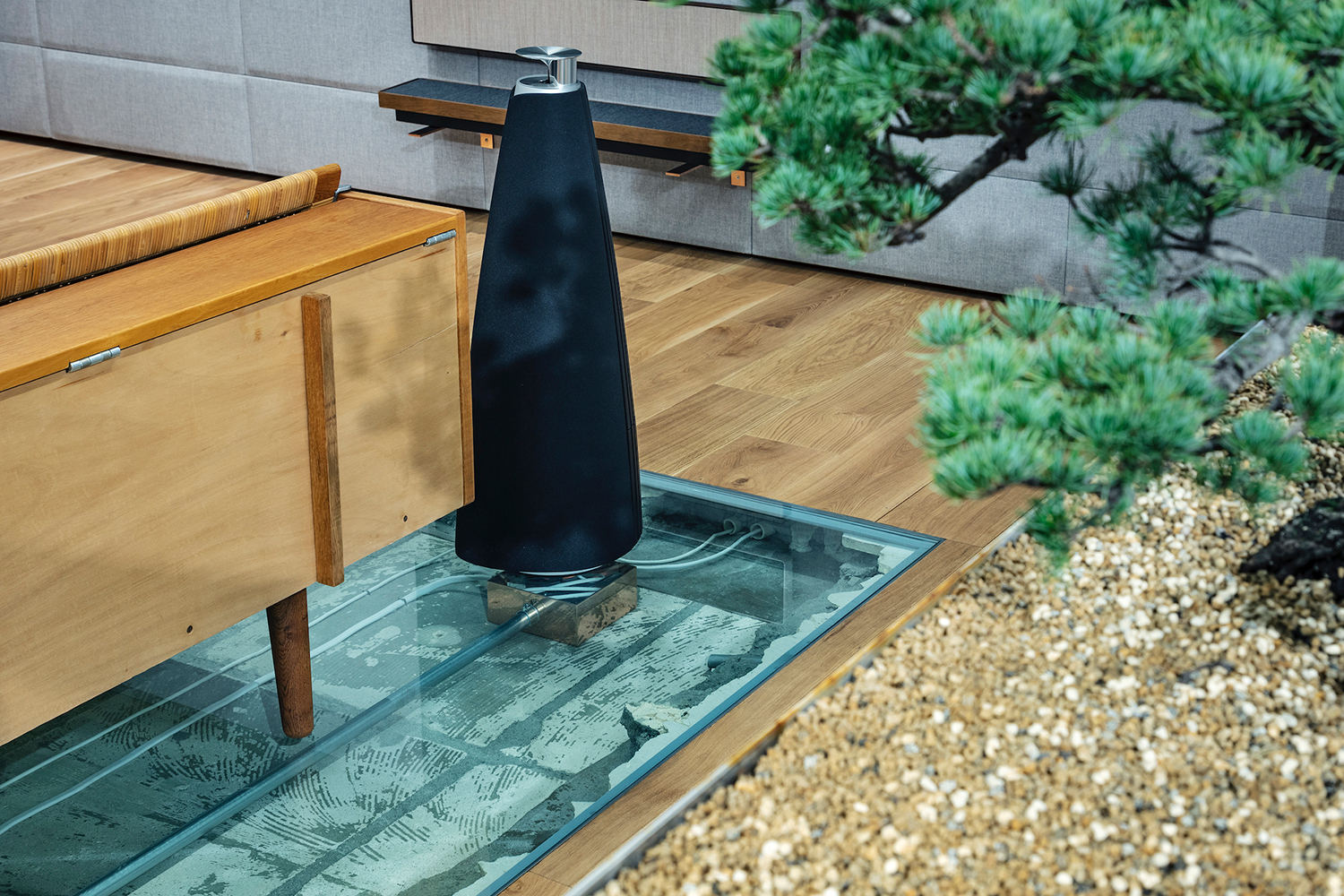DDAA has designed the flagship store for audio-visual brand Bang & Olufsen in Tokyo, Japan. Located on Namiki-Dori Street in Ginza, the building was completed in 1960 and scheduled to be demolished in two years. The design project behind the store was based on creating a living-room-like space, where users can simulate their own lives, rather than just experiencing the products. In addition, the project aims to create a space that fuses Tokyo-ness with Danish-ness and the elegant craftsmanship of Bang & Olufsen.

In a nod to B&O’s brand purpose “create timelessly distinctive products that challenge conventions and engage imaginations”, DDAA proposed a space where commonalities and contrasts between the culture of Denmark and Tokyo, the latest products and craftsmanship, and vintage furniture and contemporary design can live together. “We kept the layout requested by the brand’s design team, but instead of laying rugs, we dismantled the floor, placed wirings for the speakers and covered them with glass,” explains the studio.

The building’s renovation history, which has been overwritten since its completion, is visualized like a stratum. Cables, usually hidden inside walls or floors, are carefully wired as if they were on display in a glass case. This glass rug is topped with vintage Danish furniture produced in the same period as the building’s completion year.

Both Denmark and Japan have a culture of woodworking that is rooted in their craftsmanship. A bonsai tree about 60 years old, which further symbolizes the context of the vintage furniture and building, was placed in the center of this store. What is visualized in this space is the historical background and also the “details” based on the craftsmanship.

You can see the speaker wiring under the glass rugs. Copper plating was used on the cross braces supporting the structure of the entrance door and the furniture for the bonsai, and on the hardware holding the glass in place. The table in the meeting room is made of transparent acrylic except for the joints, copper-plated in order to be the only element visible.






